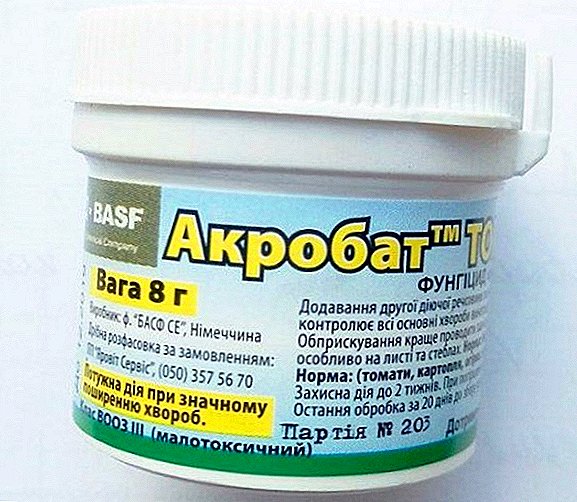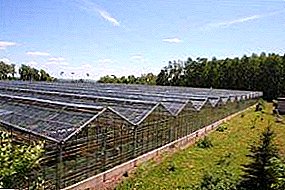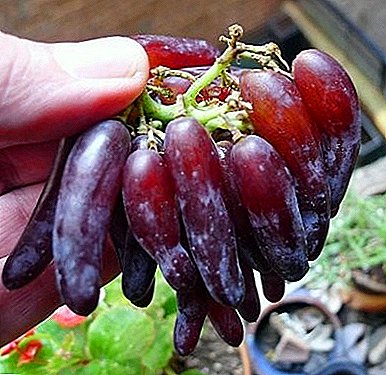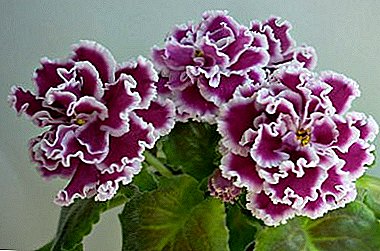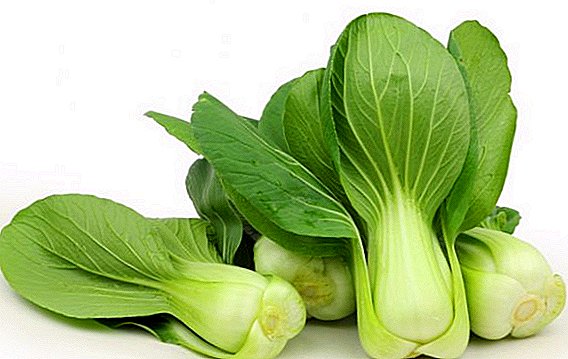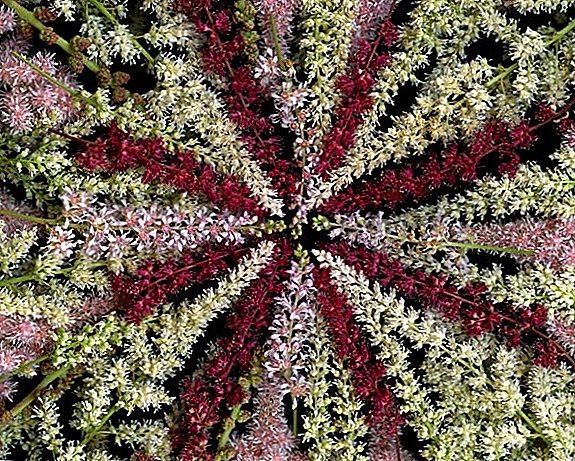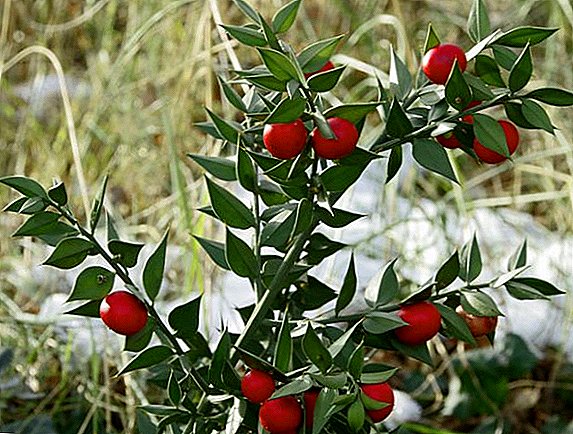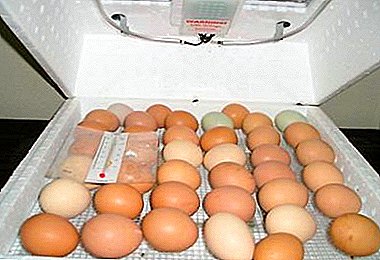 Herbicides in agriculture are badly needed, if these preparations were not, the modern agrarian industry would suffocate from the dominance of many weeds.
Herbicides in agriculture are badly needed, if these preparations were not, the modern agrarian industry would suffocate from the dominance of many weeds.
Weeds are known to inhibit cultivated plants, taking away the lion’s share of moisture and nutrients.
Today we will get acquainted with the ardent opponent of weeds - the Grims herbicide.
Composition and release form
Herbicide is produced in the form of granules, which are dissolved in water, and does not have any pronounced smell. In the sale comes in glass bottles of 100 grams. The main component is rimsulfuron (sulfonylurea group), its presence in the preparation is 250 g / kg.
Did you know? The herbicide has an acid excreted by lemon ants. Working ants kill plants that they do not like by squirting this substance into young shoots. As a result of this activity, in the forests of the Amazon there were formed areas where only one type of tree grows, beloved by these ants.
For what crops is suitable
Grims is suitable for cleaning weeds from potato and corn plantings. 
A known selective herbicide is Lapis Lazuli.
What weeds against
| Highly sensitive | Moderately sensitive | Poorly sensitive |
| field thistle, vetch, mustard, buckwheat , wheatgrass, crawl, sapwood, rapeseed, carrion, wild radish, chamomile, timothy, field violet, schiritsa, field field | ambrosia, gumai, mary white, mary hybrid, oats, millet, chaff | field bindweed, buckwheat bindweed, common dope, highlander, black nightshade, black horsetail |
The use of continuous herbicides - Hurricane Forte, Tornado, Roundap - has many limitations on the processing and subsequent planting of cultivated plants.

Drug benefits
- Large list of weed plants and their species being destroyed
- Does not require restrictions on the circulation of crops
- Long period of use: from the first phases of development to almost seven leaves
- Ability to use in tank mixes
- Bee Safety
- Low consumption
- Does not have an aggressive odor, which facilitates the work
Did you know? During the Vietnam War, the US military used herbicides, in particular Agent Orange, as weapons of mass destruction.
Mechanism of action
After spraying on cultivated crops contaminated by weeds, the main substance is quickly absorbed by the surface of the leaves of the weed plant and spreads through the tissues of all its parts. Herbicide prevents cell division, synthesis processes, levels the production of enzymes necessary for growth and development, as a result of which the plant dies. Within a few days the foliage and stalks dry out and die. 
Method, processing time and consumption rate
Herbicide "Grims" is used, according to the instructions for use, in the form of a liquid solution, spraying it over crops that need treatment. The time period of processing allows you to destroy weeds and in the phase of the first leaves and during the formation of full-fledged leafy rosettes.
Work is carried out in calm weather to avoid the drug being carried to other cultures.
Important! It is undesirable to spray "Grimes" in the heat with indicators above +25 degrees, as it is possible to burn cultivated plants.To prepare the working mixture of the Grims herbicide, you need to select a non-residential premises, and then we will figure out how to dilute it.
The bucket is filled with water by a quarter and diluted with the required amount of herbicide granules, and another two quarters of the water is added. Then, with the mixer running, fill the tank with water by half, add a mixture of buckets and surfactants at the rate of 0.2 l / ha. With the use of surfactant ETD-90 solution is better distributed on the surfaces of weeds and the effect of use increases by 20%. The last stage - water is added to the working tank so that it is filled to the brim.  "Grims" - a herbicide of long-term use and consumption rates in different phases of weed growth are changing. Consider this in more detail in the table:
"Grims" - a herbicide of long-term use and consumption rates in different phases of weed growth are changing. Consider this in more detail in the table:
| Name | Processed object | Stage of development | Consumption rate and time frame |
| corn | dicotyledons, annual cereals, perennials, sow thistle and dicots | early stage, with the formation of 2-6 leaves, then after the formation of rosettes and finally performing a two-fold fractional spraying in connection with two waves of weed germination (the interval between procedures is 10-20 days) | 40-50 g / ha 30g / ha 20 g / ha |
| potatoes | Perennial and annual grasses, wheat grass and dicots | in the early stages after the first hilling, with large outlets | 50 g / ha 30g / ha 20g / ha |

Compatibility
The active ingredient of the drug shows good results in a single application, but can be a component of tank mixes.
Before compiling the mixture, it is desirable to conduct a test test for the absence of negative reactions.
Important! Grims is incompatible with insecticides and pesticides based on organic phosphoric acids. There should be an interval of at least seven days between treatments with these drugs.
Term and storage conditions
It is recommended to store the product in rooms with closed access for children, at a distance from feed and food, medicines, adhering to the temperature range from - 35 ° C to + 30 ° C. If the bottle has not been opened, the shelf life will be two years. The aqueous solution should be used immediately, since during long-term storage it loses its properties.
Timely processing of cultivated plants with herbicides and pesticides significantly improves the quality and quantity of the crop, facilitates the care of plantings.


